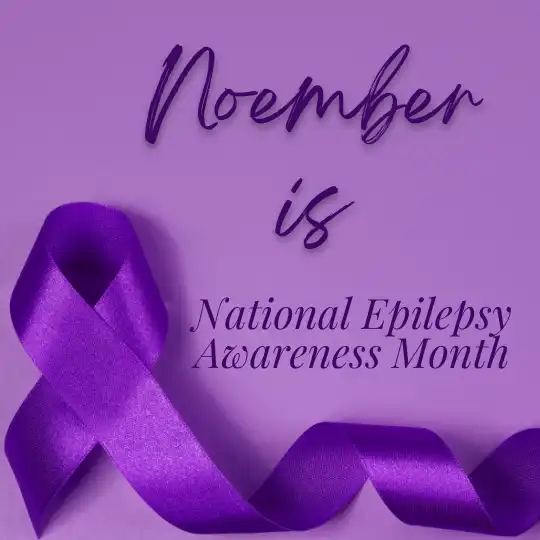Written and medically reviewed by Dorcas Morak, Pharm.D
November is National Epilepsy Awareness Month. It gives people living with epilepsy an opportunity to enlighten the public about their condition and tell their story of its overall effect on a person's life.
Epilepsy might be challenging to treat for some people because its causes are often unknown. Epilepsy Awareness Month is another opportunity to show your support to those living with this condition.
Facts and Statistics about Epilepsy:
Check out some facts and statistics about epilepsy
- At least 3.4 million Americans have epilepsy.
- About 470,000 children have epilepsy in the United State.
- About 150,000 people are diagnosed yearly.
- 1 in 26 people will develop epilepsy during their lifetime.
- Epilepsy is typically diagnosed after a person has experienced two or more seizures.
- Seizures can take different forms, from staring spells to collapsing.
- A seizure can last anywhere from a few seconds to a few minutes.
The Importance of Seizure Preparedness
Seizure preparedness teaches you the dos and don’ts of epilepsy to give first aid during an epileptic emergency.
What should I do when someone has a seizure?
- Don't panic, seizures are common and typically last a few minutes.
- Stay with the person until the seizure is over.
- Put something soft under their head.
- Turn the person on their side to keep airways clear.
- Ensure that onlookers remain calm and stay off to the side.
- Check to see if the person has any type of emergency information on them, such as a medical bracelet.
- When the seizure is over, help the person to a safe place to talk.
- Comfort them by calmly explaining what just happened.
- Offer them help to get them home safely.
- Call 911 if the seizure lasts more than 5 minutes, if the person is pregnant, or if it occurs more than once.
What should I avoid when someone has a seizure?
- Don't breathe into their mouth; they will start breathing themselves again.
- Don’t put anything in their mouth; they can’t swallow their tongue.
- Don’t restrict their movement.
- Don’t hold them down.
How do I get involved in epilepsy awareness month?
- Share your story on social media using the 2022 hashtags #NEAM2022, #RemoveTheFilter, and #SeizureFirstAid.
- Participate in epilepsy walk.
- Learn about epilepsy.
- Join a support group.
- Learn seizure first aid.
- Wear a purple ribbon.
- Advocate by contacting local or national government officials.
- Donate to or raise money for epilepsy research.
What are the Causes of Epilepsy?
About 70% of cases of epilepsy have no known cause but strokes, brain tumors, infections, and traumatic brain injuries are a few typical causes of epilepsy.
How is Epilepsy Diagnosed and Treated?
After diagnosis, medications are the first line of treatment. Doctors will consider other options like surgery if medications do not work. The type of seizure you have, age, and co-morbidity will determine the choice of drugs. Your doctor will advise you on the right time to discontinue use.
There are more than 20 different types of anti-seizure medications. Some of them include Carbamazepine (Carbatrol, Tegretol), Eslicarbazepine (Aptiom), Ethosuximide (Zarontin), Everolimus (Afinitor), Gabapentin (Neurontin), Lacosamide (Vimpat), Oxcarbazepine (Trileptal, Oxtellar XR), etc.
If you are concerned about the cost of these medications, RxLess can help. All you need to do is visit the RxLess website and type the name of your prescription into their search tool. In seconds you will receive a list of local pharmacies, including CVS, Walgreens, and Rite Aid, with the money-saving discounts they are offering. Simply text or save the discount card, show it to the pharmacist and see your savings appear on the register.

















